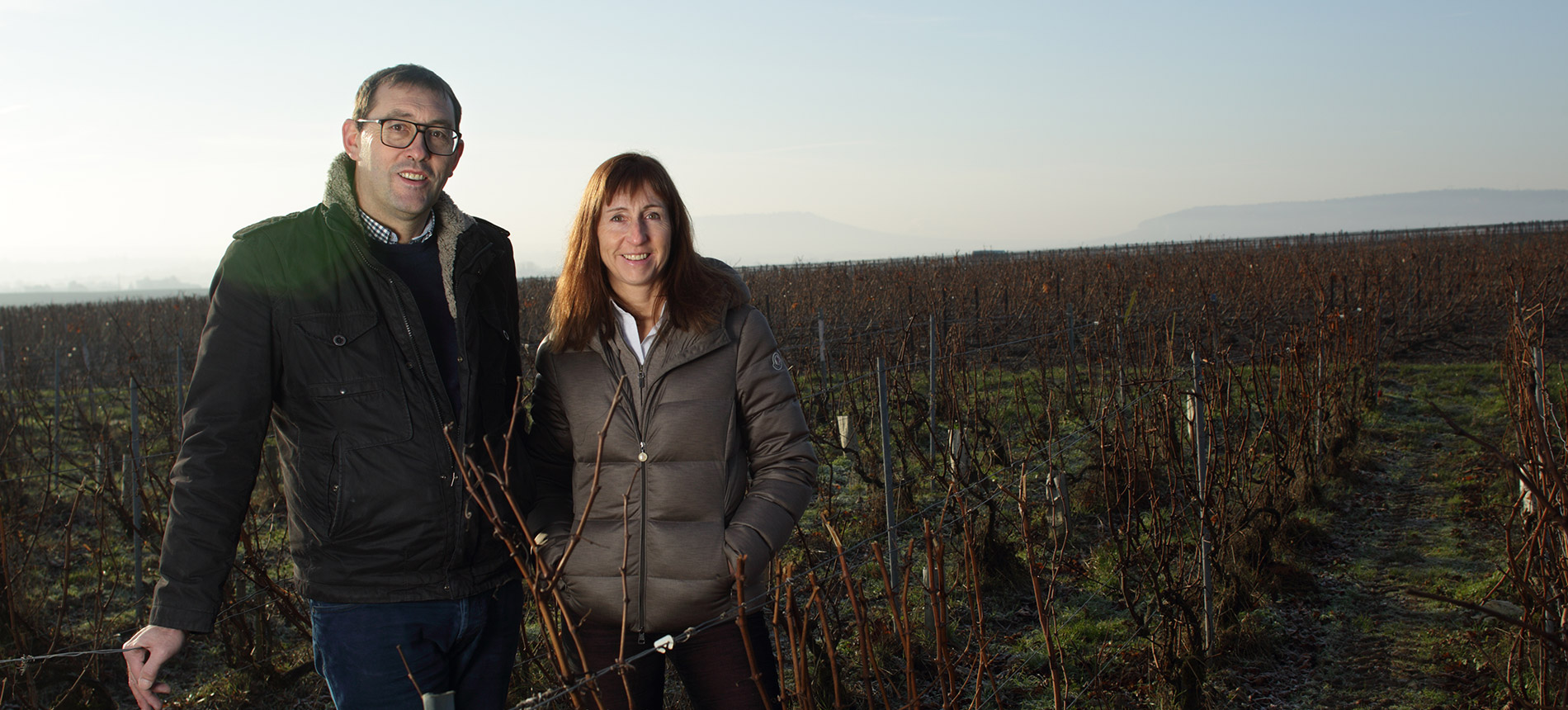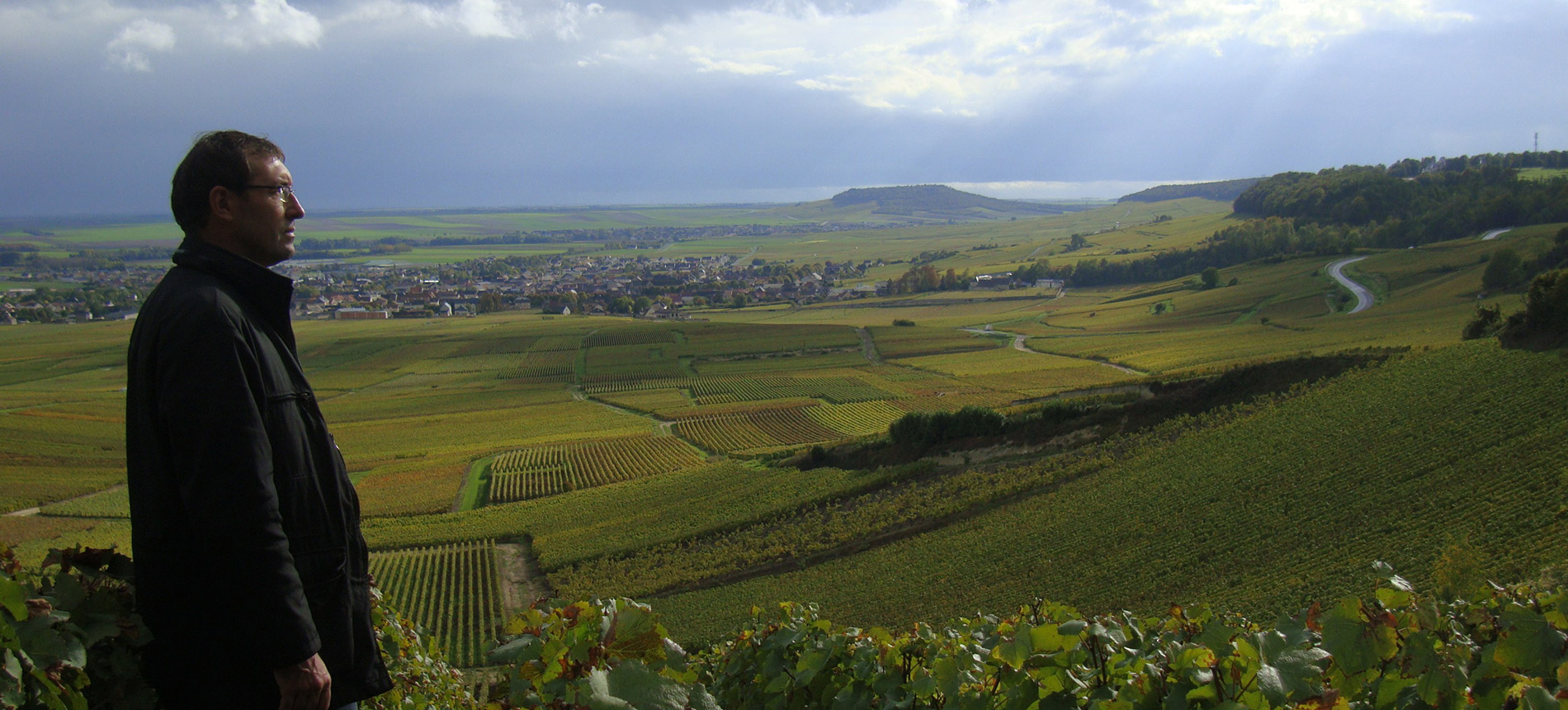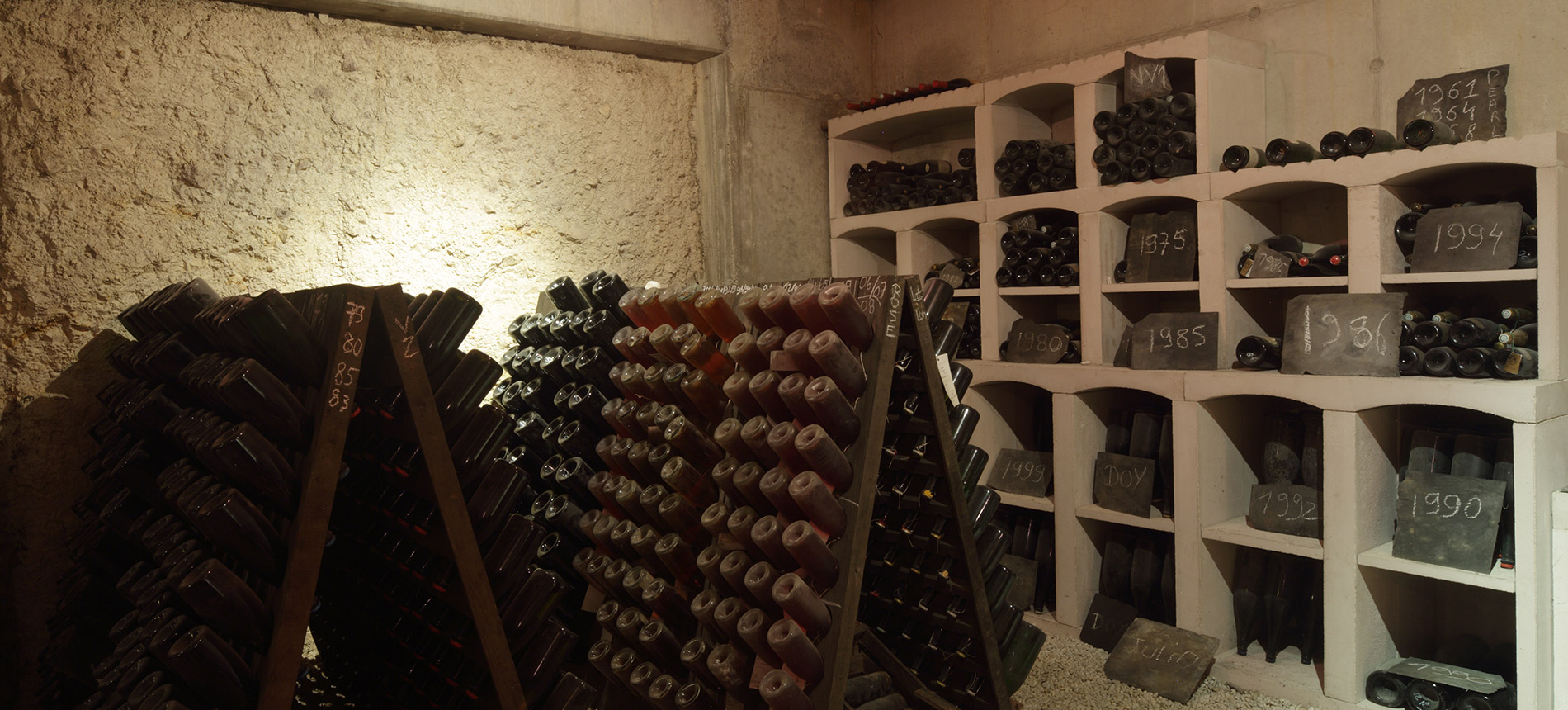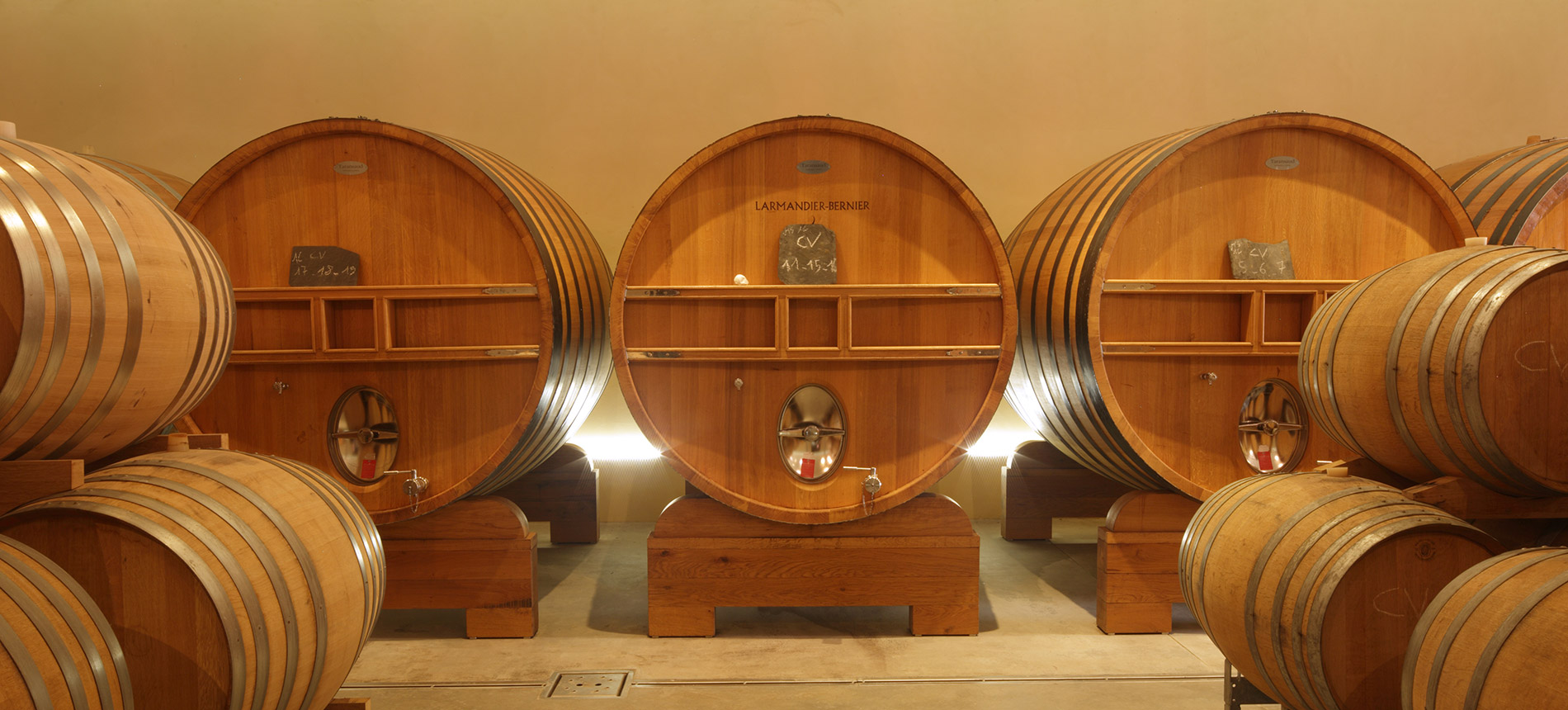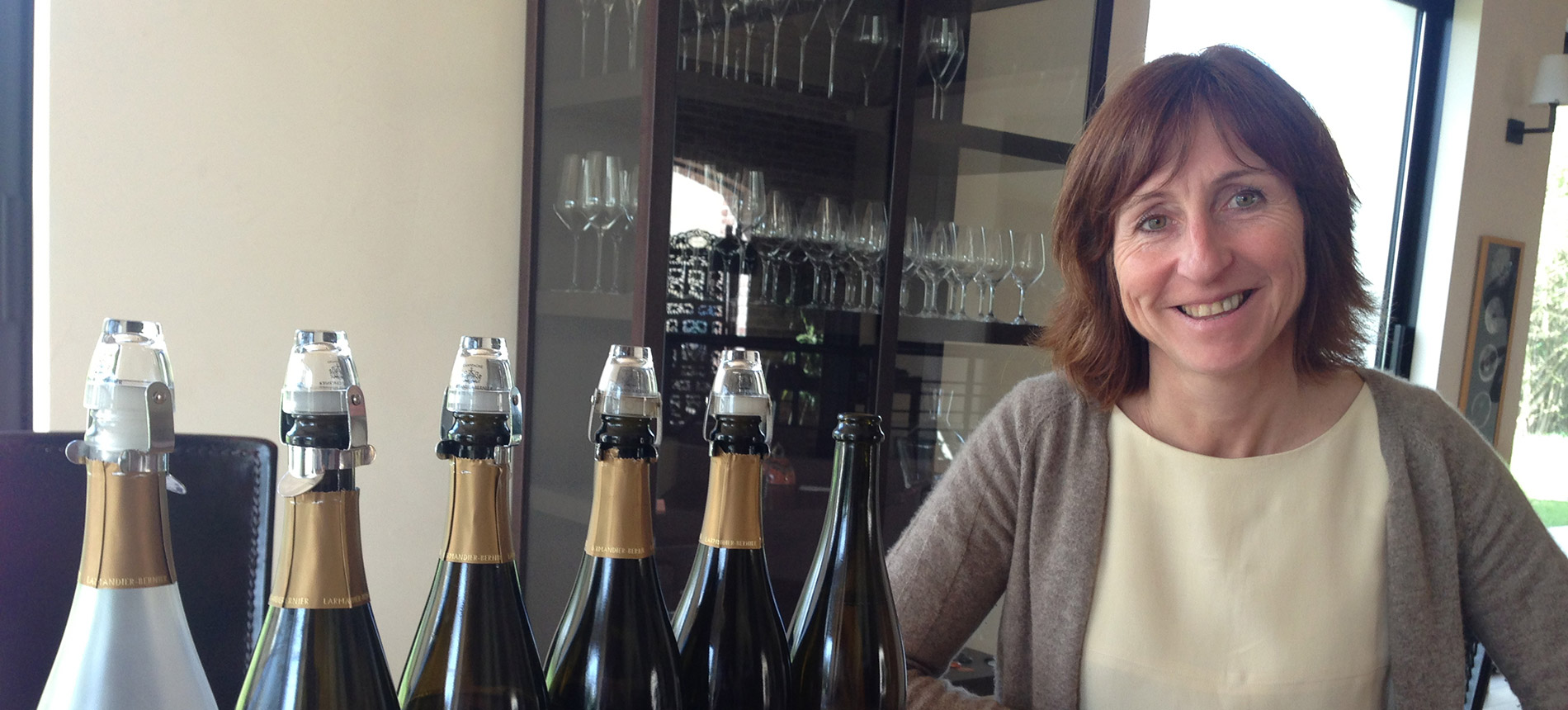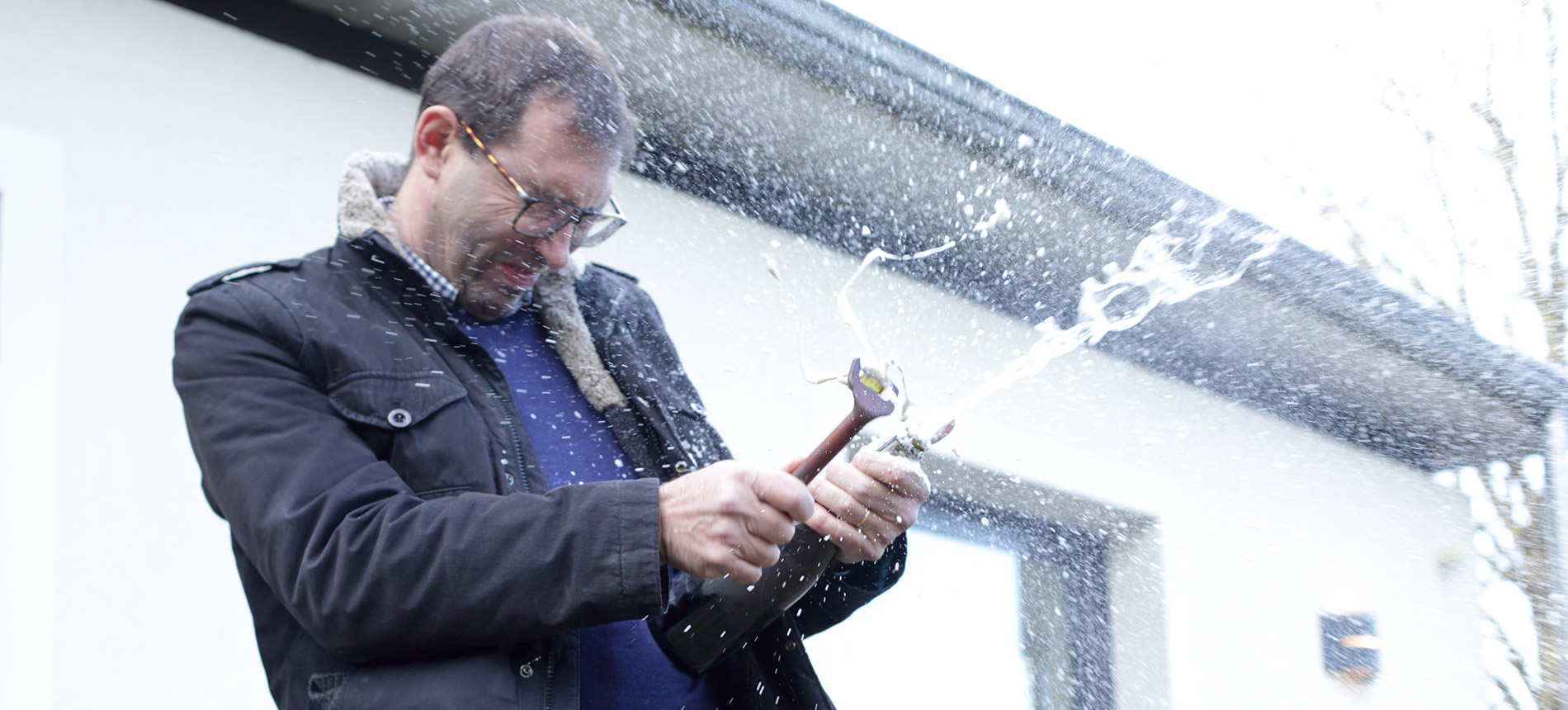Champagne Larmandier-Bernier is one of the true stars of the Côte des Blancs. Both the Larmandier and Bernier families have had an extensive history in the region, dating back to the French revolution, but it was not until the marriage of Philippe Larmandier and Elisabeth Bernier in 1971 that Champagne Larmandier-Bernier was established. The small house today is directed by Pierre and Sophie Larmandier, along with their son Arthur, and own just under eighteen hectares in some of the finest villages on the Côte des Blancs: Cramant, Chouilly, Oger and Avize (all Grand Crus), as well as in the fine premier cru village of Vertus where they hang their hats.
Pierre took over the direction of the family estate in 1988, and by 1992 he began to move the family’s vineyards over to organic viticulture and then to full-blown biodynamic farming by 1999. The Larmandiers are very much committed to the ideal of producing world class wines that speak of the inimitable terroirs of the Côte des Blancs, rather than using parlor tricks in the cellar. They thus work extremely hard to grow the finest fruit possible in each vintage. Pierre does not fear ripeness, but rather, seeks maturity of sugars and acidity in search of balance - the holy grail in grape growing. Larmandier-Bernier holdings are comprised of ninety percent Chardonnay, nine percent Pinot Noir, and one percent Pinot Gris. As their vines near 50 years of age, the Larmandiers practice a much more conservative approach to yields than is currently customary in the Champagne region.
In the cellar, Pierre Larmandier is every bit the purist and uses only indigenous yeasts for alcoholic fermentations, producing the most natural and terroir-specific wine possible. Each cru is vinified separately, using a combination of foudres and/or smaller Burgundian barrels, depending on each parcel and the qualities of the vintage. The wines also undergo malolactic fermentation. Occasionally battonage is practiced as well, but Pierre Larmandier is quick to reiterate that it is really the vintage that will decide how certain crus will be raised in the cellar.
Blending is generally done in the summer following harvest, and it is at this time that the Larmandiers decide whether or not their three single-vineyard bottlings (Terre de Vertus, Les Chemins d'Avize, Vieille Vigne de Levant) will be produced. The final blends are made and the wines are bottled in July before they undergo secondary fermentation in the deep, cold Vertus cellars. The wines are aged for several years prior to hand-riddling and disgorgement, and are then held a minimum of six months before being released into the market.
An important belief of Pierre Larmandier's is that the underlying terroir is expressed best with very minimal levels of dosage, or—in the case of Terre de Vertus—no dosage at all. He is adamant that this is not a decision that is made in the cellar, but rather, earned in the vineyard. Consequently, Larmandier-Bernier wines never receive more than four grams per liter of sugar. This puts Larmandier-Bernier's Brut Champagnes in the category of Extra Brut. The full lineup stands out for its textural purity and underlying energy derived from the chalky mineral soils. They emerge from the cellar with picture-perfect balance, drinking well right out of the gate, while possessing all of the inherent precision to age gracefully for decades.
Champagne Larmandier-Bernier’s lineup includes blended bottlings from their superb Côtes des Blancs holdings and single vineyard bottlings as well. The lineup includes:
Latitude Blanc de Blancs Extra Brut NV - previously known as "Tradition", a name that was chosen in the 1970’s by Pierre’s parents. The new name Latitude was selected since the wine is composed exclusively of Chardonnays originating from the same latitude: south of Vertus, an area historically planted to Pinot Noir. This is a generous terroir with a deep topsoil, resulting in a round, rich, Pinot-y style (despite it being 100% Chardonnay) coupled with the characteristic pureness of the Estate’s Champagnes. The base wine makes up approximately 70% of the blend and is fermented in a combination of large, old oak foudres and neutral Burgundian barrels. The remaining 30% is reserve wine from a perpetual reserve started in 2004 and kept in stainless steel tanks after the first year in oak.
Longitude Blanc de Blancs Extra Brut 1er Cru NV - This non-vintage cuvee known as Longitude replaces the wine previously referred to as Blanc de Blancs Extra Brut 1er Cru. The name references the fact that the vineyards form a line close to the 4th meridian. Longitude is also an allusion to the length and the very pure, frank and mineral style of these great terroirs, where the chalk is very close to the surface. The base wine makes up approximately 60% of the blend and is fermented in a combination of large, old oak foudres and neutral Burgundian barrels. The remaining 40% is reserve wine from a perpetual reserve started in 2004 and kept in stainless steel tanks after the first year in oak.
Terre de Vertus Bl. de Blancs Non Dosé 1er Cru - The non-dosage vintage bottling of Terre de Vertus is always a vintage-dated bottling and is produced from two top vineyards in the village of Vertus: Les Barillers and Les Faucherets, which are located in the heart of the Vertus vignoble, mid-slope on the rolling hills of the village. The wine undergoes its alcoholic and malolactic fermentations in old oak casks, and is generally aged a minimum of five years in the cellar prior to disgorgement and release. It is universally considered one of the most profound non-dosage bottlings produced in all of Champagne and ages brilliantly.
Les Chemins d'Avize Extra Brut 1er Cru - This vintage cuvée was a long time coming! Pierre knew for many years that his Avize vineyards were unique expressions of the village and merited a terroir cuvee like those of Vertus and Cramant. Historically, the vineyards of Chemin de Plivot and Chemin de Flavigny contributed to the Longitude cuvée, but in 2009 Pierre and Sophie purchased a smaller press to allow them to vinify the juice from these parcels separately. It is fermented in a combination of large foudres and smaller Burgundy barrels and receives only 2 grams of dosage.
Vieille Vigne de Levant Extra Brut GC - The Vieilles Vignes de Levant Extra Brut is a vintage cuvée produced from the oldest Grand Cru vines in the village of Cramant, ranging from fifty to eighty year-old vines. Like the Terre de Vertus, it is a single vintage cuvée fermented in oak, though in this case, it is a combination of large foudres and smaller Burgundy barrels that are used. The wine receives a very low dosage of two grams per liter prior to release.
Rosé de Saignée Extra Brut 1er Cru - This singular Rosé de Saignée Extra Brut is a vintage cuvée made from the oldest Pinot Noir vines planted in the village of Vertus, complanted with Pinot Gris (10%). The grapes are crushed and the juice macerates on the skins for two or three days to give the wine its lovely color (rather than fermented as a white wine and then blended with a bit of red still wine further on down the road to make a Rosé). The rosé is fermented in stainless steel tanks and concrete eggs, and finished with an extremely delicate dosage of three grams per liter. This is a Champagne Rosé meant for the table with a deep, penetrating style that stands up to savory meat dishes.
Overall, the wines from Larmandier-Bernier are reference point Champagnes, which fully demonstrate the profound potential of low dosage and non-dosé bottlings that beautifully express terroir, have impeccable balance, and are clean, zesty and pure palate impressions.
Click here for a Map of Larmandier-Bernier vineyards.
